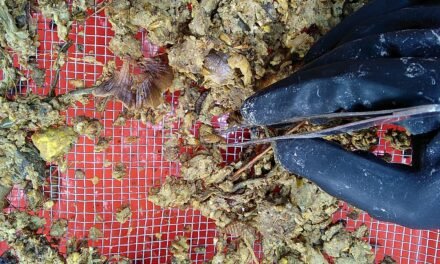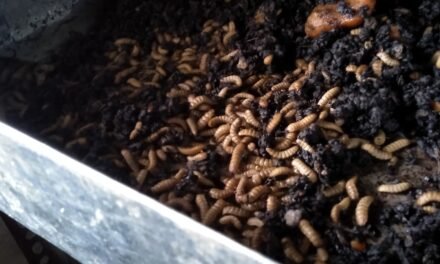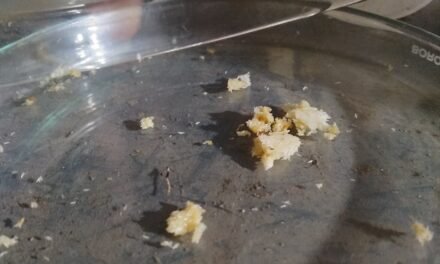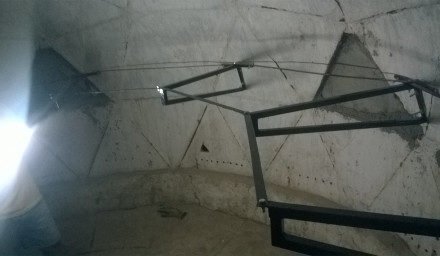Compost is decomposed organic matter (often created from recycled matter) that can be used as a fertilizer. Compost is very beneficial for plants because it is rich in nutrients. It can be applied to soil as an amendment or to plants in several ways.
In its simplest form, compost is created by building a heap of wet, organic material and then allowing the materials to break down, or decompose, over an extended period of time. The heap is regularly aerated through turning. During the decomposition process, the mixture becomes rich in chemicals like ammonium, which is the form of nitrogen used by plants.
Organic materials such as yard waste and food scraps are some of the most common ingredients in compost. Having the right combination of materials is the key to nutrient-rich compost. Compost reduces the need for chemical fertilization, making it a key component in organic farming. (Anonymous 1)
Food waste is the organic material having the high calorific and nutritive values to microbes, that’s why efficiency of methane production can be increased. In all the cities and places, organic waste is dumped or disposed in landfill or discarded, which causes the public health hazards and diseases like malaria, cholera, typhoid. Inadequate management of wastes like uncontrolled dumping bears several adverse consequences. It is not only polluting ground water and surface through leachate but also promotes the breeding of flies, mosquitoes, rats and other disease bearing vectors. Also, it produces unpleasant odor and methane which is a major greenhouse gas contributing to global warming (Pavankumar S.). Composting is one of the best way to reduce the harmful effects by wet waste.
Hence it is necessary to adopt composting method.
There are five major factors influence how long composting takes and how much heat is generated. These are as follows:
The ideal C: N ratio for composting is between 25:1 and 30:1, with carbon being the higher number.
Small particles decompose quicker than larger ones, because more of the total volume is exposed to decomposers. Chopping or shredding coarse and woody materials before adding them to the compost pile increases the surface area accessible to decomposers and therefore speeds up the composting process.
A balance of air and water must be maintained for rapid decomposition to take place. The optimal moisture level for composting is 40 to 60 percent – about as moist as a wrung-out sponge. This level of moisture provides organisms a thin film of water on materials, while still allowing air into pore spaces.
For efficient composting, a compost pile must be large enough to hold heat and moisture, but small enough to admit air to the centre.
A compost pile that is made with the proper materials can heat up to 170ºF and produce usable compost in as short as one month. However, it is best to keep temperatures below 140ºF to avoid killing beneficial organisms and losing nutrients. Turning a hot pile will cool it off. (Anonymous 2)
Here in Vigyan Ashram, composting is done on the wet waste like kitchen waste and other food waste. The wet waste is mixed with the culture for fast microbes growth to obtain a good compost. The mixing of waste and culture is done in composter designed by the DIC fellows. After 7 days a good quality compost becomes ready to use.
This waste is firstly cut into small pieces so as to improve the bacterial growth. As given above particle size is one of the major factor which affects on composting rate. We know small particles decompose quicker than larger ones, because more of the total volume is exposed to decomposers. Hence the shredding or chopping of the waste is much more necessary.
Problem Definition:
Cutting of the waste is done by different methods i.e. by manually or by mechanically using shredders available in market. In Vigyan Ashram it was done by manually operated chopper for converting of macro agriculture waste and food waste into small easily decomposable form, which can used as organic manure. While using this chopper the operator has to continuously lift and press it for efficient for cutting. This process was little bit time consuming and also less efficient as the man is unable to chop the waste more than about 10 kg at a time. Also a man can have pain in hand and neck area due to continuous lifting and pressing the chopper.
Hence there is need to design a chopper in low cost which operates mechanically to reduce human drudgery. Also it can be used to societies having their daily waste about 5 kg. Therefore the project entitled mechanization of chopper was selected.
Objectives:
1. To design the mechanized chopper.
2. To develop the mechanized chopper.
3. Cost estimation of developed mechanized chopper.




